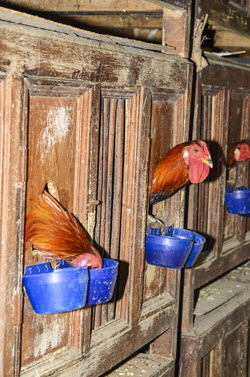Two recent busts in Mahoning County call attention to issue
With two Ohio cockfighting rings uncovered in the last week, farm groups are calling for tougher penalties for participants.
As reported by the Dayton Daily News, State Reps. Heather Bishoff, D-Blacklick, and Barbara Sears, R-Sylvania, are pushing House Bill 215, which would make staging or witnessing cockfighting an unclassified felony, punishable by fines of up to $10,000.
Supporters of the bill include the Ohio Farm Bureau and the Ohio Poultry Association.
Police in Mahoning County busted two different cockfight operations on Jan. 26 and Jan. 28.
According to a report in the Youngstown Vindicator, in the most recent bust, more than 30 birds were found inside the home. They also found steroids used to bulk up the birds, or make them more combative.

Describing the scene, one authority said there were several family members, including young children, in the home, and birds were in upstairs and basement rooms. One room, about 6-by-6 feet, had bloodstained carpeted walls.
In May 2014 police seized over 72 roosters and arrested 52 people in a cockfighting ring in Fulton County.
“Criminals are coming to our state to participate in this cruel blood sport because Ohio has notoriously lax penalties for cockfighting. Indiana and Michigan, as well as all other Great Lakes states, have punished cockfighting as a felony for years,” said Corey Roscoe, Ohio state director for the Humane Society of the United States.
“Yet Ohio has failed to catch up; the maximum fine for cockfighting in our state is $250. Only Alabama and Mississippi treat cockfighting more leniently.”